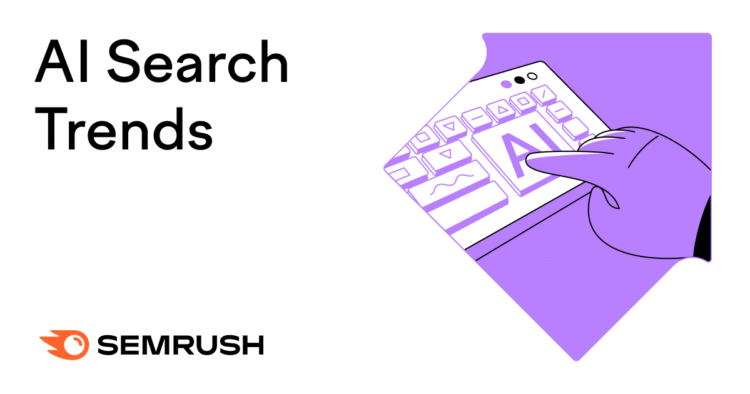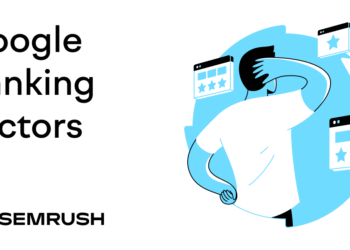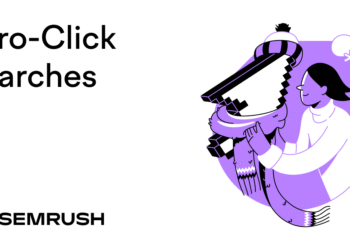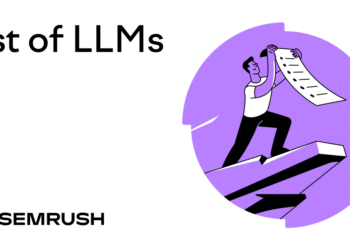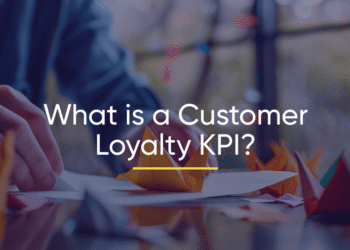AI is rewriting the way search works.
Generative overviews, multimodal inputs, and conversational interfaces are reshaping how people discover information. And how marketers earn visibility.
By the end of this guide, you’ll know the major AI search trends and what steps you can take to stay discoverable.
Understanding AI Search
AI search writes answers rather than ranking pages for users to assess. It pulls insights from multiple sources, interprets the query, and delivers a single synthesized response in real time.
In AI-powered search, your goal is to be referenced. To have your content cited, quoted, or mentioned.
Generative engines (like Google’s AI Overviews, Perplexity, and ChatGPT) act like editors. They decide which pieces of content to surface, summarize, and stitch together to satisfy what users are looking for.
How AI Search Differs from Traditional Search
AI search answers a user’s query by interpreting intent, retrieving information from credible sources, and composing a response. Traditional search finds the most suitable sources for a user’s query and presents them in a list.
Here are the main differences between traditional and AI-driven search at a glance:
|
Category |
Traditional Search |
AI Search |
|
Information Processing |
Interprets the query and serves the best possible results from an indexed database, ranked by authority and relevance |
Interprets the query and draws on multiple sources and training data to generate a synthesized answer |
|
Result Format |
Displays a list of clickable links |
Delivers one complete answer that may contain citations or references |
|
How Success Is Measured |
Metrics such as ranking position and click-through rate (CTR) |
Metrics such as inclusion, visibility, and citation frequency within AI-generated summaries |
With AI search, the goal is to be part of the answer. Not just displayed as one possible option.
Major Trends Transforming AI Search
AI search is changing not just what people find—but how they look for it. Which is evident from these trends:
Queries Are Becoming Longer and More Complex
Searches are getting longer and more complex now that users get concrete answers instead of sifting through multiple results.
People aren’t typing fragments like “CRM software pricing.” And then running multiple follow-up searches to find what they’re looking for.
They’re entering long-tail terms that are full questions like “What’s the best CRM for a 50-person marketing agency with Salesforce integration that costs under $150 per user monthly?”
Results still include links for deeper reading. And in Google, those sources can appear in both the AI Overview and in standard search results.
This example shows how AI Overviews surface multiple brands—like Freshsales, HubSpot, and Zoho CRM—even when those domains don’t appear in the top organic results:

And AI systems can return a single response that blends text, data, and visual context.
The example below shows how ChatGPThandles a complex query: “Compare SEO vs. paid search ROI for B2B SaaS companies with six-figure ARR, including implementation timelines and required expertise.”
Instead of listing links, the AI generates a structured, synthesized answer that combines insights from multiple credible sources in a single response.

What This Means for Marketers
The shift to longer, complex queries means keyword targeting is giving way to context. Structure your content so AI systems can easily recognize and cite it.
To meet this shift, create pages that:
- Answer specific, scenario-based questions
- Mirror natural language in your headings and body content
- Use precise, conversational phrasing that avoids ambiguity
- Use tools like Semrush Prompt Research to research the way people naturally ask questions
Multimodal and Structured Exploration Is Growing
AI search blends text, images, voice, and video into one query. And returns synthesized responses.
Adoption is broad. Google Lens alone processes over 12 billion visual searches each month.
Below, you can see how entering an image along with a simple text prompt into Google can produce a detailed AI-generated response.

Beyond text and image inputs, AI search is also evolving in how it displays information.
It increasingly organizes multi-source insights into tables, lists, and bullet points, creating a more tutorial-like, interactive reading experience.

This shift makes structure more important than ever. AI systems can’t synthesize what they can’t segment.
What This Means for Marketers
The rise of multimodal and structured search means your content must be clear, organized, and accessible across formats. Include transcripts, descriptive alt text, and captions so AI systems can interpret and repurpose your visuals accurately.
Transcripts make audio and video content readable and searchable. Alt text describes what an image shows to both users and search engines. Captions provide context for viewers and improve accessibility across formats.
Adoption and User Behavior Trends
These trends reveal who’s using AI tools and how, which is useful information for tailoring your strategy.
Adoption Is Growing Among Younger Generations
AI search use is accelerating most rapidly among Gen Z and younger millennials.
Surveys show these groups are significantly more likely than older adults to experiment with AI tools and integrate them into daily habits.
Recent research highlights the gap clearly:
This trend suggests that the next generation of internet users is already relying on AI as a default search and learning companion.
What This Means for Marketers
Brands with younger audiences have an early advantage in AI visibility.
With Gen Z and younger millennials using AI tools at nearly double the rate of older adults, brands that reach them early gain a lasting visibility edge.
To capture this opportunity:
- Show up where they search: Invest in conversational and AI-assisted environments like Perplexity, Gemini, and ChatGPT Search
- Use their language: Mirror the natural, question-based phrasing younger users favor in prompts and AI chats
- Create adaptable formats: Publish short-form, visual, and summary-ready content that can be cited or condensed in generative responses
- Track new surfaces: Monitor visibility beyond traditional rankings. Look for citations, mentions, and on-platform engagement across AI tools.
Traffic- and Visibility-Related Trends
AI search is reshaping how visible brands are and whether they get clicks.
Click‑Through Rates Are Decreasing
Click-through rates (CTR) are declining as AI summaries give users what they need directly on the results page.
Recent studies show a clear downward trend:
|
Source |
Finding |
|
CTR dropped by 15.5% across queries that trigger AI Overviews |
|
|
Clicks are nearly twice as high when no AI summary appears (15% vs. 8%) |
|
|
Only 1% of users click links inside AI summaries |
When AI summaries appear, users are less likely to click through to individual websites. Reducing traffic even for high-ranking pages.
What This Means for Marketers
Traffic alone no longer reflects visibility. Track citations, mentions, and on-SERP presence alongside sessions and conversions.
Use Google Search Console (GSC) to track organic CTR and Semrush Position Tracking and AI SEO Toolkit to monitor how your brand appears in AI-affected results.

AI Overviews Are Showing for More Queries
AI Overviews went from appearing for 6.49% of searches in January 2025 to 13.1% in March 2025. And they typically trigger for:
- Complex or multi-part questions (“how to combine,” “compare,” “best way to”)
- Instructional and product comparison searches
- Current events and information-dense topics
Overviews often cite several sources (commonly three to eight) that deliver direct, extractable answers via:
- Clear writing that answers questions in one or two sentences
- Self-contained sections that focus on one topic
- Concrete data and statistics when relevant
What This Means for Marketers
Appearing as a cited source in AI Overviews is becoming a new visibility benchmark.
As AI-generated answers cover more queries, citation signals determine which brands users see first. To capture this opportunity:
- Optimize for inclusion: Structure sections around direct, self-contained answers that can be easily quoted or summarized by AI systems
- Build trust signals: Keep statistics fresh, attribute data clearly, and ensure visible author or brand credibility
- Monitor citation performance: Use tools like Position Tracking to identify where your pages are mentioned in AI Overviews and measure how visibility shifts over time

The brands that focus on extractable, authoritative content will gain exposure even when users don’t click through.
How to Optimize for AI Search: A Practical Framework
Visibility in AI search depends on how clearly your content communicates meaning and trust. To people and to the AI systems interpreting it.
The path forward combines clarity, adaptability, and consistent measurement.
Phase One: Build Clarity and Context (Weeks One to Four)
AI systems reward content that directly and completely answers user intent.
Write in natural, conversational language, lead with summary-first sentences, and structure sections so each can stand alone as a complete thought.
Start by ensuring that search engines and AI systems can access your content:
- Run a Semrush Site Audit to confirm full crawlability, indexability, and clean technical structure
- Identify which of your pages already appear in AI Overviews or other AI-driven summaries. This helps you understand where you’re visible now—not to avoid those terms, but to identify what’s already working.
- Use the Cited Pages filter in the AI Visibility Overview report to see what types of content and formats surface most often in generative answers. For you and your competitors.

Structured data can reinforce meaning, but clarity comes first. Google notes that schema types like FAQ, How-to, and Article markup may support inclusion in AI Overviews. But they aren’t guaranteed.
Focus on producing clear, self-contained explanations that stand on their own.
Phase Two: Optimize and Enrich Content (Weeks Five to Eight)
Once your foundation is in place, focus on content quality and multimodal reach.
Create high-value pages that users and AI systems find genuinely useful and extractable.
Here’s where to focus:
- Incorporate visuals, videos, and examples that make complex ideas easier to understand
- Add descriptive alt text and transcripts so your visual and audio content can be interpreted in AI search
- Update old content for freshness and relevance. AI models prioritize up-to-date, credible information.
- Use conversational phrasing that mirrors natural queries (“What’s the best…,” “How do I…,” “When should…”)

This phase is about optimizing for human readability first. And AI synthesis second.
Well-structured, valuable content performs across both.
Phase Three: Refine Performance and Usability (Weeks Nine to Twelve)
Strong AI visibility also depends on site experience.
Refine performance factors that help users and AI systems interpret your content efficiently:
- Improve mobile performance and page speed: Compress images, minimize JavaScript, and reduce render-blocking elements
- Enhance UX clarity: Keep layouts simple, CTAs visible, and sections logically grouped
- Validate structured data: Use Google’s Rich Results Test and the Thematic report in Semrush Site Audit to validate your markup and confirm proper implementation

This phase focuses on fine-tuning. Ensuring your technical quality and on-page experience support sustained visibility.
Ongoing: Track and Evolve Visibility
AI search visibility shifts as algorithms and models evolve.
Track how often your brand is referenced, cited, or summarized within AI-generated results. Not just where it ranks.
Use Semrush Position Tracking and the AI SEO Toolkit to monitor:
- Mentions or citations across AI tools like ChatGPT, Gemini, and Perplexity
- Referral traffic and engagement from AI-affected queries
- Changes in overall brand visibility and search impressions over time

Visibility in AI search is iterative. The more clarity, quality, and technical precision you build in, the more likely AI systems are to trust and cite your content.
FAQs About AI Search Trends
Is AI Search Eliminating Organic Traffic?
No, AI search isn’t eliminating organic traffic. But it is reducing visits to source websites.
Measure presence (citations, mentions, SERP feature coverage) alongside traffic and conversions to see your real impact.
How Do You Optimize for AI Overviews?
To optimize for AI Overviews, indicate main topics and questions with headings and directly address the questions they ask or imply at the beginning of each section. Cite reputable sources and keep your content fresh.
What Content Formats Perform Best in Generative Results?
Structured, scannable formats perform best in generative results. That can include Q&A blocks, comparison tables, and step lists.
Multimodal content helps increase your visibility in AI systems. Pair images and videos with alt text, captions, and transcripts.
How Should You Report on AI Visibility?
To report on AI visibility, pay close attention to conversions driven by AI tools. And monitor whether branded searches in traditional search engines increase.
Keep an eye on your citations, mentions, and overall visibility in AI systems. To understand how you appear in those tools and how your brand is perceived.
Semrush’s AI SEO Toolkit lets you monitor many of these metrics.

